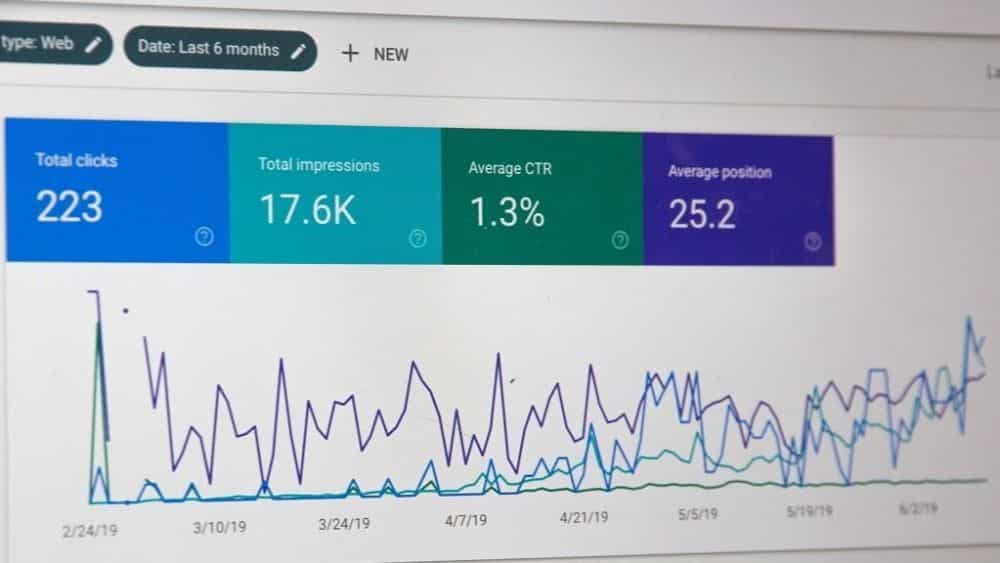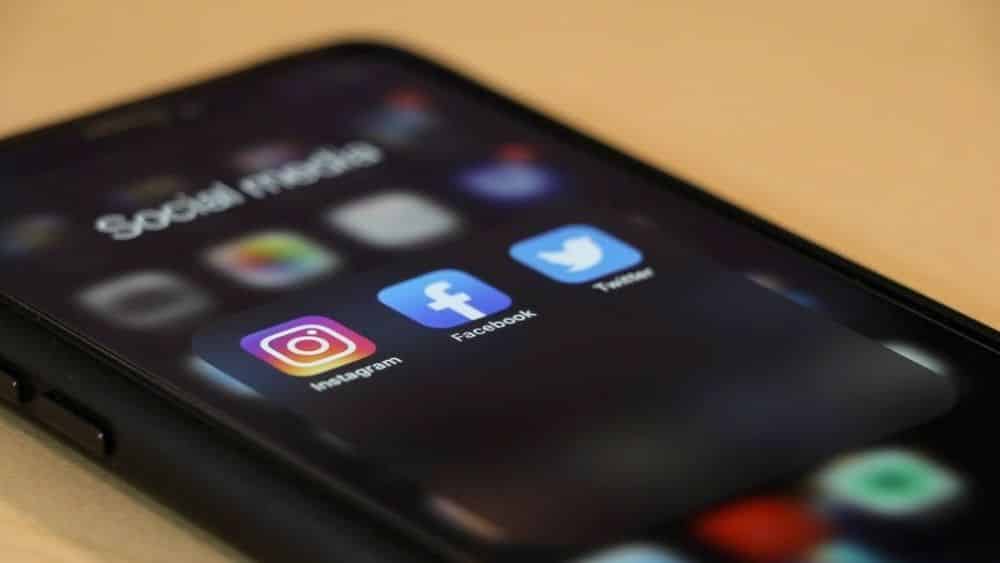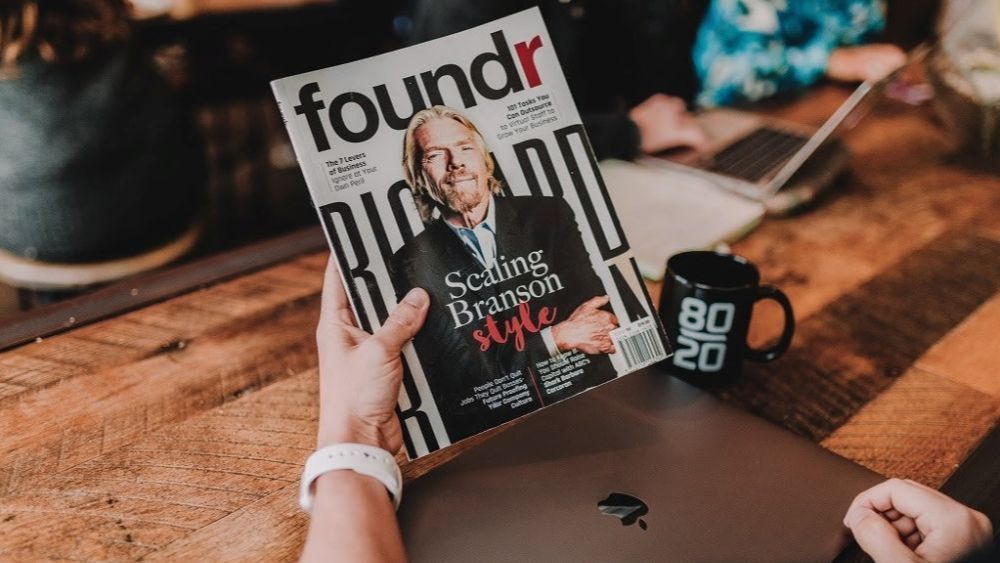This article has been contributed by Ana Acosta.
Think the only things you have to do during self-isolation are catch up on your watchlist and clean out your closets? Think again. The coronavirus pandemic hasn’t been easy on anyone, least of all businesses. But there’s a way you can use this time to your advantage. Here’s how you can build long-term brand value in the midst of madness.
Related: Self-Isolating? How To Start A Business While Quarantined
COVID-19’s Impact on Business
The COVID-19 pandemic has created some of the most unstable economic conditions the world has seen in a century. In just a few months’ time, more than a trillion dollars of wealth will have vanished from the global economy.
Billions of workers worldwide find themselves forced to stay home, not able to venture into their communities except to get the bare essentials. It almost feels like Groundhog Day, where the same thing happens every day and society remains locked in a twisted pandemic purgatory.

Businesses around the world have closed their public spaces in the wake of COVID-19.
The business world is struggling to make sense of the disruption, too. Do they hit pause on everything, stockpile their cash and brace for the impact of little to no sales for the next few months? Or do they carry on, re-evaluating their marketing plans to adapt where needed and continue to put their brand out there?
This philosophical business question has plagued marketing professionals for decades: how do you build a brand during economic downturns? There are many competing theories, but most strategists agree that abandoning your marketing efforts isn’t the answer.
Don’t Be Discouraged in Times of Crisis
Lately, the news has been fairly negative. The doom and gloom brought on by the onset of one of the worst pandemics in modern history are enough to get even the most positive people down. As you watch your family’s, friends’ and even your own life implode, it’s hard to see the light at the end of the tunnel.
But as cliché as it sounds, don’t let the news get you down. When COVID-19 is defeated—and it will be defeated—your customers will need you, your products and services, probably more than ever before. The best way to be there for them is to keep your head up and keep on marketing!
It’s hard to not let the (likely) recent failures of your short-term marketing efforts depress you. People are scared of the unknown and many of them have put a temporary pause on spending until things are a little more certain. When things recover, the groundwork you lay today, no matter what the current response, will help you in the long run tomorrow.
Don’t believe it? Look at China. Since China’s coronavirus-related deaths peaked on February 24, the country has seen a marked decline in deaths. They’re detecting only a handful, if any, new cases daily, down from the several thousand per day a month ago.

Starting on March 8, China saw a significant decline in the amount of new COVID-19 cases. Image source: World Economic Forum.
Right now we’re in the thick of it, but if we watch the curve of China, the first country to overcome the COVID-19 pandemic, things will get better.
Put Your Brand Out There
The desire to run and hide during a time like this is a natural human reaction. Most people dislike adversity and when that’s combined with the unknown, their first reaction is to pull back and wait until things become clearer. Putting your brand out there is probably one of the last things on your mind.
This is completely understandable. Almost everyone feels this way, even your competition. But instead of wallowing in fear, like they probably will, you need to position your brand at the forefront of people’s hearts and minds. If you don’t, another brand will, and you’ll lose out on a huge opportunity.
There’s data to back this up. Ten years ago, Harvard Business Review studied 4,700 public companies’ performance before, during, and after recessions. Their research showed that the more a company cuts back during recessions, the less likely they are to outperform their rivals when times get better.
Specifically, only 21 percent of businesses that implemented extreme cost-savings measures during the 2007-2009 recession were able to edge out their competition when economic conditions improved. Companies that cut few or no expenses during the same time were 37 percent more likely to outperform their rivals in 2010 and beyond.
One of the things that will separate the winners from the losers in a post-COVID-19 world is which companies persevered with their promotional efforts, even in the darkest days of isolation.
Despite these facts, you may still want to crawl into a hole and wait out this thing with Netflix and a roll of cookie dough, but you must resist!
You probably don’t realize it, but there are many people out there relying on you to keep business running.
Mark Ritson said it like this, “The wheels of industry need to keep turning so workers are paid and families are fed. Those wheels are best greased by effective marketing. We need to drive demand like never before.”
How right he is. Marketing will play a huge role in pulling business out of the dredges of pandemic and into the light of commerce, but it’s up to marketers, like you, to put their brands out there.
Be Respectfully Relevant
Putting your brand out there is important, but you’ve got to do it the right way. In times of crisis, people are sensitive and scared. Your marketing efforts need to be informed by these realities and respect the current climate.
Here are a couple of do’s and don’ts to stay respectfully relevant in a time of crisis:
- DO empathize with people, it may feel disingenuous but it’s important to let them know you’re all in this together.
- DO be transparent. If you’re struggling, let your customers know. If you’re doing something to help, let them know that, too.
- DO offer sales and promotions. You aren’t taking advantage of the situation, you’re helping people affordably get what they need and want.
- DON’T name a sale or promotion after the crisis.
- DON’T offer opinions. Everyone has their own feelings about the situation, its effects and the way it’s being handled. Keep your brand neutral.
- DON’T pretend like the crisis isn’t happening. It’s affecting you, it’s affecting your customers and it’s affecting your company.
There’s a way to market in a time of crisis. Your brand can add helpful, meaningful content to the world in a way that respects the hardships your customers are enduring. If you want to do this well, you’ve got to stay informed.
Yes, this means you need to watch the news, or at least browse a website of your choice for a few minutes a day. You don’t have to immerse your life in the 24-hour news cycle, but take the time to check into the situation so you know what’s going on and where.
It’s difficult to be sensitive if you don’t fully understand what’s going on. Staying in the loop on the pandemic’s status will help you be respectfully relevant.
Stay Social… at a Distance
With billions of people around the world ordered to stay home, social media traffic is at an all-time high. Capturing the attention of this audience is more important than ever. There are a few ways you can do this.
Social media is one of the first places people look for up-to-date information about your business. If you’re still open to the public, post about it so people don’t assume you’re closed. If you’re closed but assisting customers remotely, say that! Facebook, in particular, is the hub where people look for this kind of information, as the status of many businesses are frequently changing in these uncertain times.

Now more than ever, people are relying on social media to stay connected as they self-isolate during the COVID-19 pandemic.
Social media is another great place to humanize your brand, especially in a time of crisis. Share what you’re doing for your employees. Post about donations or assistance your business is giving to help fight the pandemic. You might even want to post about the joys of working from home with several small children in tow!
Think about what content your audience would relate to and curate accordingly. This is a huge opportunity for your customers to see your brand for what it really is and make lasting connections on a deeper level—ones that will translate into long-term brand loyalty.
When posting to social media, finding the right hashtags is almost as important as the post itself. You need to be aware of what hashtags your potential customers are searching for so they can discover your brand. Here are a few of the most popular pandemic hashtags to consider:
- #coronavirus
- #Covid_19
- #covid
- #stayhome
- #stayathomechallenge
- #quarantine
- #quarantineandchill
- #quarantinelife
You may also want to consider more ad buys on social media. Consumers have more time than ever to scroll their feeds, and clicking through ads is a huge part of that. But buyer beware, many brands have noted the uptick in social media use and are employing the same tactic to capture the added traffic. If you want your ads to work, they’ve got to stick out from the rest with top-notch content, graphics and design.
Sharpen Your SEO Strategy During Downturns
For some companies, cutting back their SEO investment when business is down is an obvious cost-savings measure. But pausing SEO efforts leads to long-term impacts affecting businesses many months after downturns like the pandemic are over. Don’t make this mistake, but hope your competition does!
If you maintain a strong SEO game while your competition pulls back, the benefits are twofold. Your rankings increase because your SEO is constantly improving, as they should with a robust SEO plan in place. But when your competition simultaneously pulls the plug on their SEO, their rankings tank. As their SEO falters, yours will only get stronger and begin to overtake higher rankings they once held… and then some.

SEO strategies can be complex, but they serve an important purpose, especially during economic downturns.
Consider using an SEO platform tool to optimize your website and drive as much traffic to your pages as possible. Using a tool like this is a great way to ensure you’re capturing every possible SEO opportunity and maximizing traffic to your website. It also takes the guesswork out of SEO and frees up your time to focus on other valuable brand-building tasks.
Bear in mind the importance of localizing your SEO as the COVID-19 pandemic unfolds. Most consumers are self-isolating and only interested in dealing with companies near them. Make sure your site is optimized for “near me” searches to capture customers stuck at home and seeking products or services in their immediate area.
Keep your SEO game strong during this challenging time, and your brand will emerge stronger than ever when the dust has settled.
Take a Stand
Times like these are when people’s true colors come out. How do you want your brand to be known? As one that unwaveringly stood for its employees, customers and country like a beacon of light in the midst of a dark storm, or a brittle branch that snapped at the first sign of trouble?
The world is watching as businesses go on these divergent paths. In the short-term, the ones doing something to help alleviate the crisis—either by continuing to pay their employees, giving customers free access to a needed product or service, or shifting their production to create items needed to fight the virus—look like heroes.
And don’t misunderstand, they are heroes and truly an example to us all. But businesses engaging in charity need to be careful about how they message their good deeds. Make too big a deal about what they’re doing, and they look like they’re pandering (remember, respectful relevance). Make too little a deal about it, and no one knows about the important role charity plays in their brand identity.
The world should know what you’re doing and why. At the risk of sounding like a profiteer, the promotional benefits are obvious. But you also need to tell the world as a public service.
If you’re paying your employees while being shut down, your employees, their family and friends will want to know that. If you’re setting up a food pantry or distributing hand sanitizers to the public, they need to know that, too. Think of getting the word out about the good your company is doing as more of a PSA and less of a marketing play.
Be smart, don’t toot your horn too loud and remain respectful of the issue at hand and you’ll do just fine.
Now, if you’re unwilling or unable to do anything for anyone during this time of crisis, a word of caution. People are dialed into the coronavirus pandemic on a scale never before seen. Billions have been ordered to stay home and now have tons of time to sit and scroll on their phones, computers and tablets. They are watching and waiting for influencers, businesses and politicians to misstep, and they’re not likely to forgive or forget those blunders any time soon.
Take Virgin Airways, for example. Owner Sir Richard Branson’s initial response to the pandemic was to ask his 8,500 employees to take eight weeks’ unpaid leave as the airline dramatically dialed back operations. A surprising stance for someone who once said, “Clients do not come first. Employees come first. If you take care of your employees, they will take care of the clients.”

Richard Branson’s initial decision to not pay Virgin Airways employees was met with so much criticism, he changed his mind and has now pledged $250,000 to support employees in the wake of COVID-19.
The public’s overwhelmingly negative reaction to billionaire Branson’s seemingly savage decision was so significant, he changed his mind. On March 23, he pledged $250 million to fund a relief package for 70,000 employees across several Branson-owned companies.
In the short term, he looks humbled and perhaps coerced. In the long term, will he be remembered as a heathen or hero? Only time will tell.
Catch Up
Before the virus spread, you probably had a to-do list about a mile long with no opportunity to tackle it in sight. Everyone has these aspirational goals but very little time to ever accomplish them. Not anymore!
Working from home means you don’t have the typical office distractions like cupcakes in the break room or chatting with your coworkers. You also can’t get derailed by someone showing up in your office with a time-sensitive problem to solve.
There are so many things you can choose to do with this time, but you might want to start by evaluating your brand strategy from 100,000 feet. Are you happy with the names of your products and services? Are you positioned well in your market or do you need to shift? Is your overall messaging true to your brand?
Then think about the design of your brand identity. Is there continuity across all your brand’s touchpoints like your website, app, print and more? Do you have a style guide to govern what fonts, colors and logos are used in materials representing your brand? If you do have a style guide, does it need revision?
These are just a few things you may have on your to-do list. Either way, cleaning out the cobwebs and freshening things up will prove to be a valuable use of your time.
Play the Long Game
Short-term performance oriented-marketing is not doing well right now. Few people see a product or service on sale and clamor to click through. No amount of hot deals and clever sales activation can stimulate a market that is currently terrified, locked inside their homes and unsure of their future.
Most companies have reduced, at least by a little, their marketing budgets for the foreseeable future. They need to make up their drop in sales somewhere and brand-building investments are an easy target. So with a chilly market and fewer dollars to spend, what can you do?
Let’s consider this question in the long-term. When COVID-19 is a distant memory and your customers have returned to their old spending habits, who do you think they’re going to buy from? A company they haven’t heard from for several months or a business that stayed top-of-mind because they continued to put themselves out there in the midst of the crisis?
Think of brand-building like a freight train. When one of these trains leaves the station, they’re crawling at a snail’s pace. The longer they’re on the tracks, the more momentum they build and the faster and faster they go. Completely stopping and restarting one of these behemoths is far more challenging than temporarily slowing the train down.
Slow down your train if you must, but do everything you can to keep it going. When the world is up and running again, starting your marketing efforts over from scratch is the last thing you’ll want to do.
The coronavirus pandemic won’t last forever and neither will this economic slow-down. The world will open up again and when it does, you need to be ready.
Now is the time to focus on building your brand. You’ve got the time, you’ve got the knowledge, all you need to do is put in the work. When COVID-19 is in the past, you’ll be glad you did.
_
About the author: Ana Acosta from SureOak SEO agency is focused on establishing long-term, solid relationships with clients that are aimed at mutual growth and success.
No comments:
Post a Comment